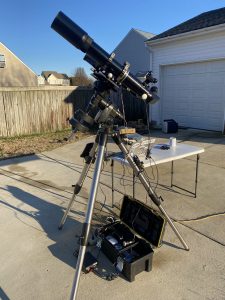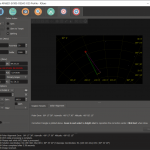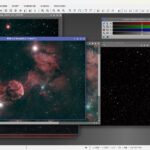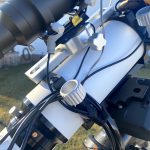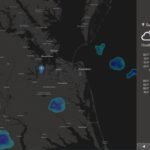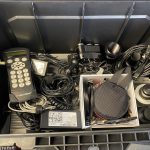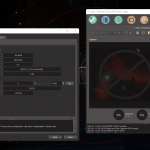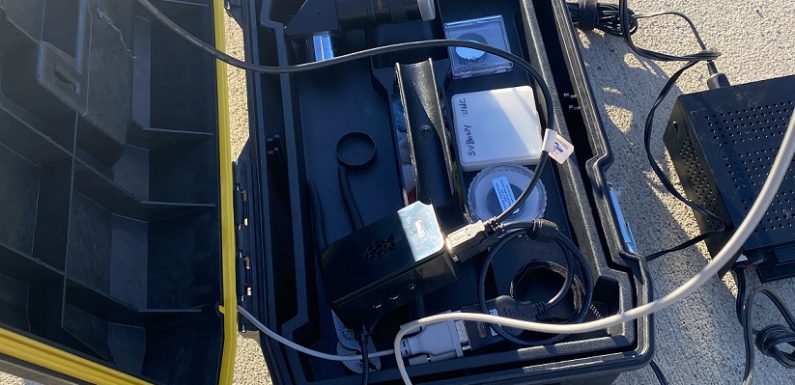
Some more winter weather is on the way and the scopes are still put away. I am testing some cameras and writing some posts waiting for clear skies. I am always looking for ways to simplify the process of moving and setting up my gear. One of the things which often keeps people, sometimes myself included, from using their telescope is how difficult it may be to move and the time it takes to set up. The easier things are to set up, the more likely you are to set them up.
Another issue I personally have is just keeping everything together so I don’t have to hunt for it when I want/need it… so I put together what I am calling my EAA Black Box to help simplify my set ups.
The box is an inexpensive waterproof toolbox I picked up from somewhere (probably Lowe’s or Home Depot, maybe Walmart – I really don’t remember but you should be able to find something similar at any hardware store – here is a similar toolbox on Amazon). I like the fact it is waterproof so I can leave it outside with the rest of the gear at my observation site (which is my backyard) where I sometimes leave my gear set up for days (or even weeks) at a time.
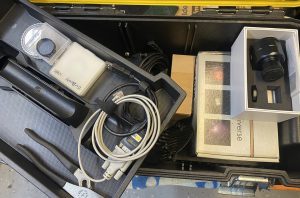
In the box I have assembled all the pieces and parts I need (other than the scopes and mount) to set up for EAA observing including:
- Raspberry Pi 4 running Astroberry Server and other Astronomy Software and GPS Module
- SVBONY SV305 Camera
- Orion StarShoot Auto Guider Camera (may replace it with a SV905c soon).
- Atik Titan CCD Monochrome Camera (probably won’t stay in here as I am not sure I will be using it much).
- Various USB Cables for connecting the cameras and autoguiding (ST4) cables
- 1.25″ x 2″ Extension Tube which is needed to get enough back focus on with the SV305 on my AT66ED scope.
- Celestron NexStar hand controller, hand controller rs232 serial cable, and USB to Serial adapter
- Mount power cables – 12 volt DC and Celestron AC to 12v DC adapter.
- 3 Socket Cigarette Lighter Splitter with LED Voltage Display Dual USB
- AC to 12v DC 10A cigarette lighter adapter
- Filters: SVBONY UHC, Celestron 93623 Narrowband O III, Lumicon H Alpha, IR/UV Cut Filter
- Dew Buster Dew Heater Controller (I leave the heater strips on the scopes)
- Bahtinov Focus Mask for the 60mm, 66mm, and 80mm scopes
- Power Strip
- Notebook and Pen
I take notes when I am observing (and you should too)… what I looked at, weather, camera settings, issues I had, things that worked well, etc. - Some other odds, ends, and basic tools that are needed from time to time (cleaning supplies, pliers, screw drivers, flashlight, batteries, etc)
All the stuff for EAA observing in one place, protected, and organized. I can just grab the box and have everything I need at my observing site. There is still plenty of room in there. As I use it more I’ll add other things I find I need, or remove things I don’t.
I can connect everything up, check focus, and do a polar alignment using Ekos in about a half hour or so. When I am done observing, packing everything away is pretty quick as well. Everything has a place and everything is in it’s place all packed up and ready to grab for the next session.
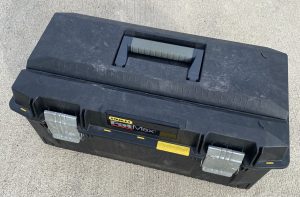
Yes, the top is dirty. Another benefit of this box is I can use it as a step stool when setting or when visual observing and the eyepiece is a bit out of reach.
When I finish the scope buggy the EAA Black Box will be able to ride on it so I’ll have my mount, scopes, and EAA gear all together and easy to move in and out of the garage.
Hopefully once this winter weather passes we’ll get some nice clear skies.
Would love to hear what you have done to streamline your setup or how you organize your gear. Just leave a note in the comments below…

